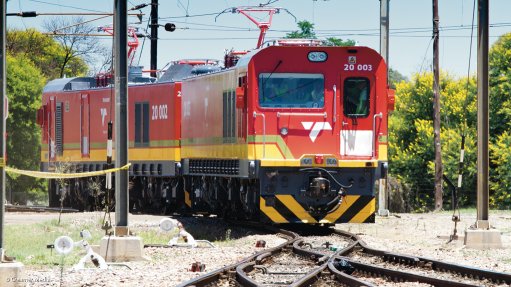Toyota, Hino targeting larger market share as it continues to rebuild after floods
The devastating floods in KwaZulu-Natal in early 2022 were the worst disaster Toyota South Africa Motors (TSAM) has ever experienced in the country; however, the automotive company is adamant about building back stronger.
During a media breakfast at TSAM’s premises in Sandton, Gauteng, on June 13, sales and marketing senior VP Leon Theron said the motor and truck industry was changing rapidly, with the past three years having been the most difficult that the company had experienced, with challenges including the impact of the pandemic, as well as the July 2021 riots and the 2022 floods.
The flooding caused the company’s plant in Durban, which produces 70% of its vehicle volumes, to be out of production for about three-and-a-half months. The lost production negatively impacted on sales and revenues.
Theron said the company took a “silver-lining approach” to the disaster, and used it as an opportunity to upgrade the 50-year-old plant. The rebuild is almost complete and, with these improvements, is expected to result in better efficiencies, as well as increased capacity in the long term.
He pointed out that the company ended last year with just over 24% market share, and this year, is targeting an ambitious market share of 27%, despite the considerable pressures facing the automotive and truck industries in the country, including a depreciating rand, high fuel prices and high levels of inflation.
Meanwhile, Hino, a company unit of Toyota, which produces trucks, is also aiming for an increased market share.
The company appointed Anton Falck as VP of Hino in April, with the aim of having dedicated leadership for this complex, seperate business unit.
Falck highlighted that Hino was pleased to have launched its all-new 700 Series in May, to complete its local truck line-up.
The first 700 Series of extra-heavy trucks was introduced to the local market in 2004, with the range upgraded and enhanced in 2019.
Although this launch was delayed, it has since been well received by the market and should position the company to play a significant role in the segment, Falck said.
He outlined that this range sets new standards in terms of safety features and delivery, and that feedback has been positive thus far. Hino will now seek to increase volumes of this in the country.
Falck also mentioned that Hino sees much potential in the country for overall increased sales this year, with demand for trucks to remain strong as the rail sector remains a challenge.
Meanwhile, a recently announced partnership is also expected to result in benefits.
At the end of May, it was announced that Daimler Truck, Mitsubishi Fuso Truck and Bus Corporation (MFTBC), Hino Motors and Toyota Motor Corporation had concluded a memorandum of understanding (MoU) to accelerate the development of advanced technologies, as well as on merging MFTBC and Hino.
Daimler Truck, MFTBC, Hino and Toyota said they would collaborate on achieving carbon neutrality by jointly developing hydrogen and other connected, autonomous, shared and electric technologies.
Falck explained that a holding company would be formed, with Toyota and Daimler to hold 25% each, and the rest to be publicly owned.
The company would collectively work on innovation and technology advancements.
Also, Falck said Hino has a pilot of the Hino 300 Series Hybrid Electric light-duty truck under way in South Africa. It is not in a position to launch this in the country as yet, owing to issues such as fuel compatibility.
However, he said it had been successful in Japan and Australia, and if the results from the pilot were successful, its use in the country would contribute to lower emissions and lower fuel consumption.
Toyota was also aiming to reduce its reliance on State-owned utility Eskom. At its Durban plant, it was rolling out solar power which should be complete before the end of the year, Theron said.
Moreover, its parts warehouse in Boksburg and its head office in Sandton are also implementing solar energy.
This will power parts of the operations, which will reduce the amount of energy needed from Eskom, provide environmental benefits, and free up more power for the grid.
Comments
Press Office
Announcements
What's On
Subscribe to improve your user experience...
Option 1 (equivalent of R125 a month):
Receive a weekly copy of Creamer Media's Engineering News & Mining Weekly magazine
(print copy for those in South Africa and e-magazine for those outside of South Africa)
Receive daily email newsletters
Access to full search results
Access archive of magazine back copies
Access to Projects in Progress
Access to ONE Research Report of your choice in PDF format
Option 2 (equivalent of R375 a month):
All benefits from Option 1
PLUS
Access to Creamer Media's Research Channel Africa for ALL Research Reports, in PDF format, on various industrial and mining sectors
including Electricity; Water; Energy Transition; Hydrogen; Roads, Rail and Ports; Coal; Gold; Platinum; Battery Metals; etc.
Already a subscriber?
Forgotten your password?
Receive weekly copy of Creamer Media's Engineering News & Mining Weekly magazine (print copy for those in South Africa and e-magazine for those outside of South Africa)
➕
Recieve daily email newsletters
➕
Access to full search results
➕
Access archive of magazine back copies
➕
Access to Projects in Progress
➕
Access to ONE Research Report of your choice in PDF format
RESEARCH CHANNEL AFRICA
R4500 (equivalent of R375 a month)
SUBSCRIBEAll benefits from Option 1
➕
Access to Creamer Media's Research Channel Africa for ALL Research Reports on various industrial and mining sectors, in PDF format, including on:
Electricity
➕
Water
➕
Energy Transition
➕
Hydrogen
➕
Roads, Rail and Ports
➕
Coal
➕
Gold
➕
Platinum
➕
Battery Metals
➕
etc.
Receive all benefits from Option 1 or Option 2 delivered to numerous people at your company
➕
Multiple User names and Passwords for simultaneous log-ins
➕
Intranet integration access to all in your organisation















